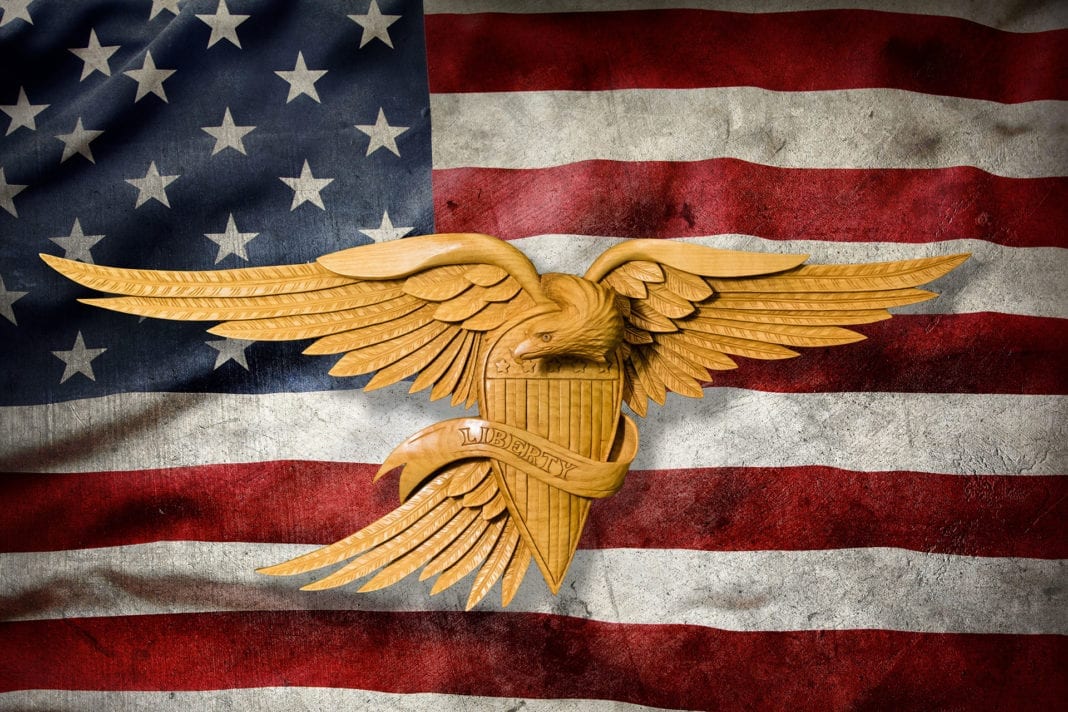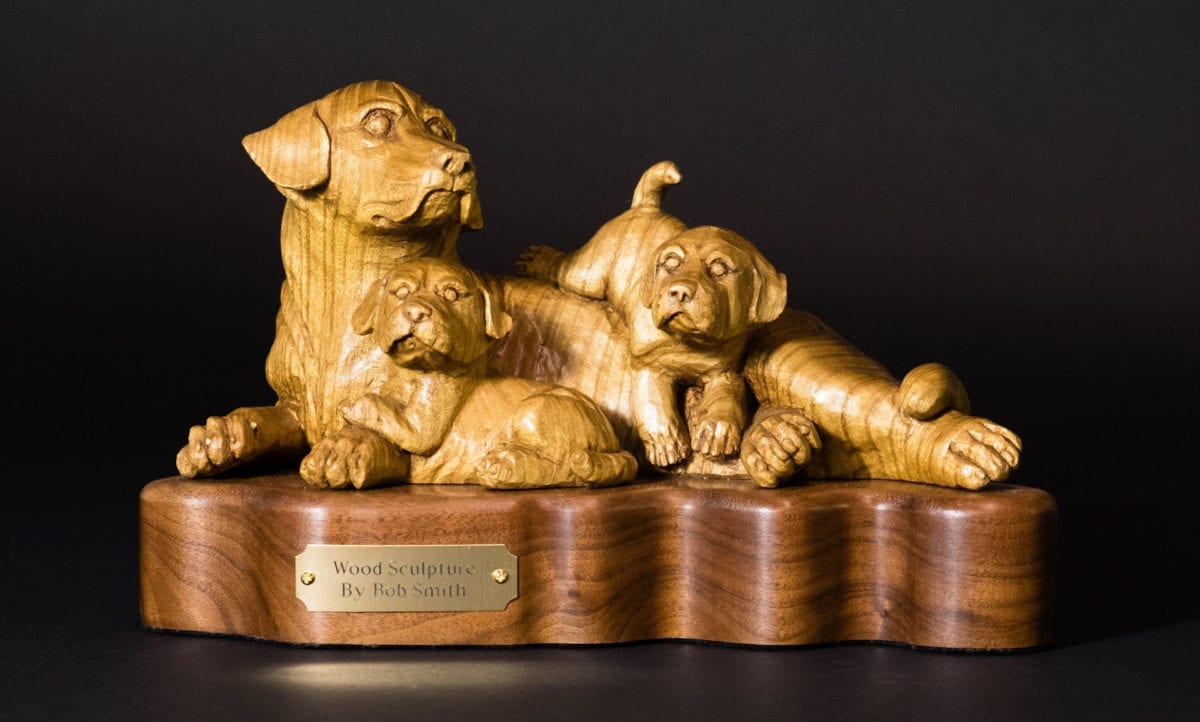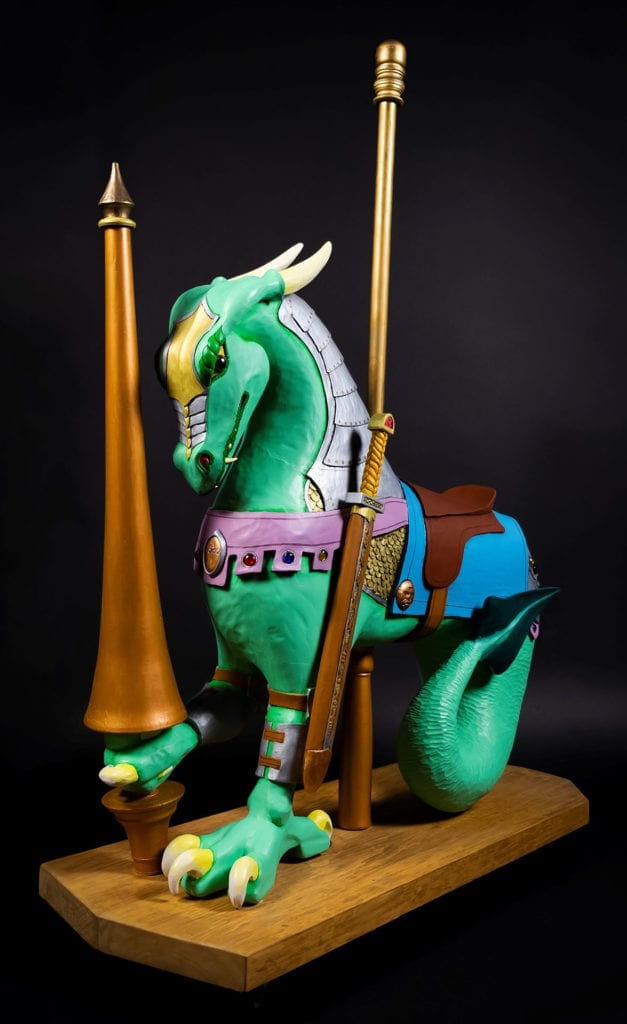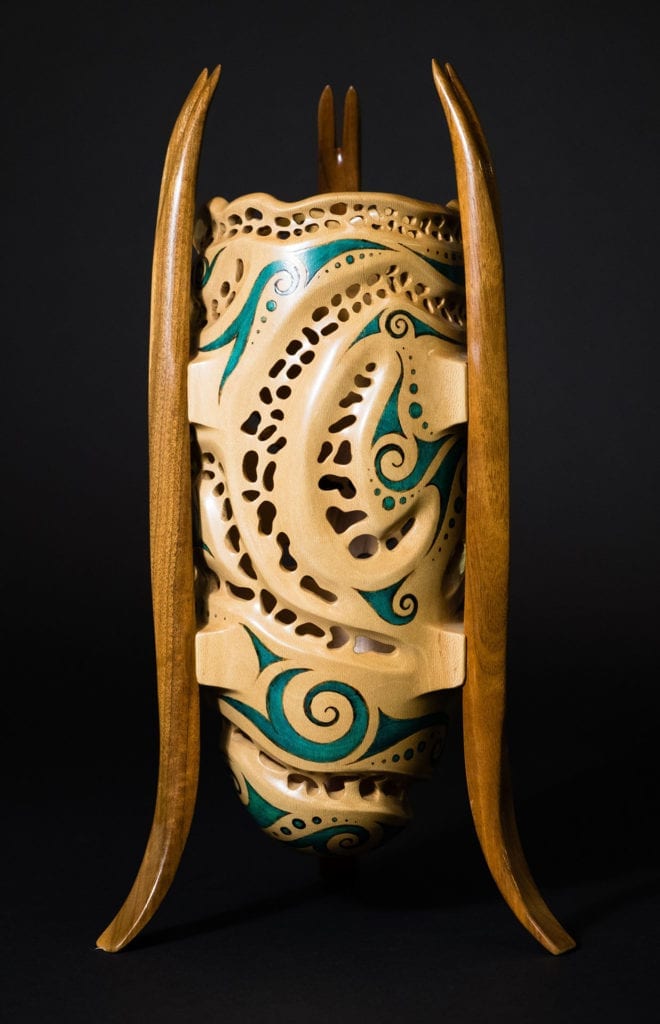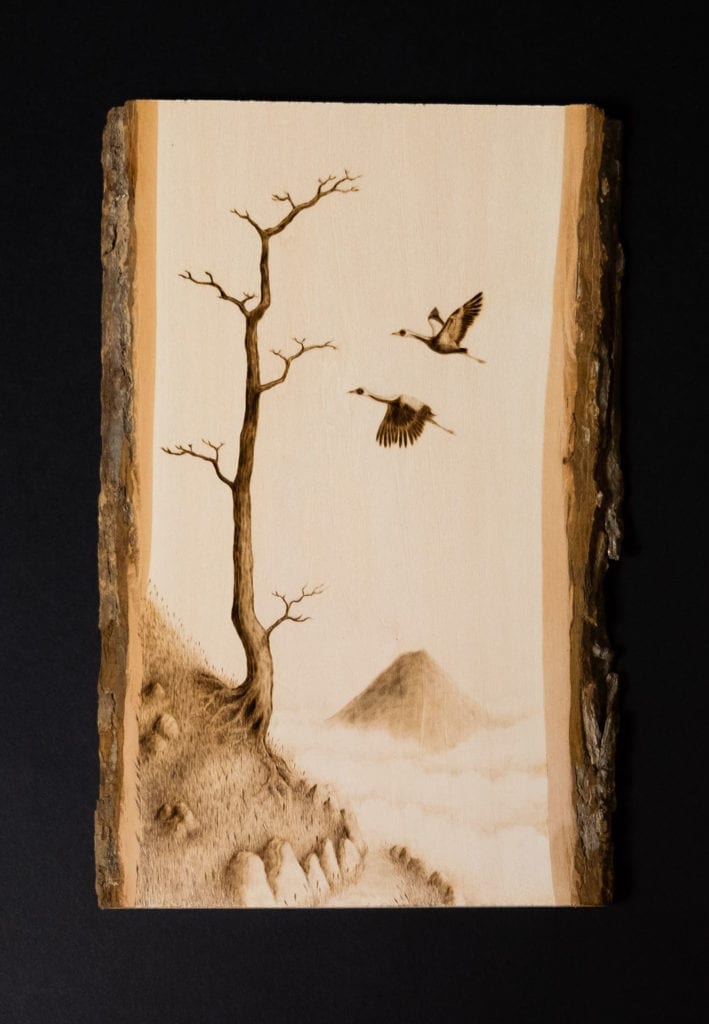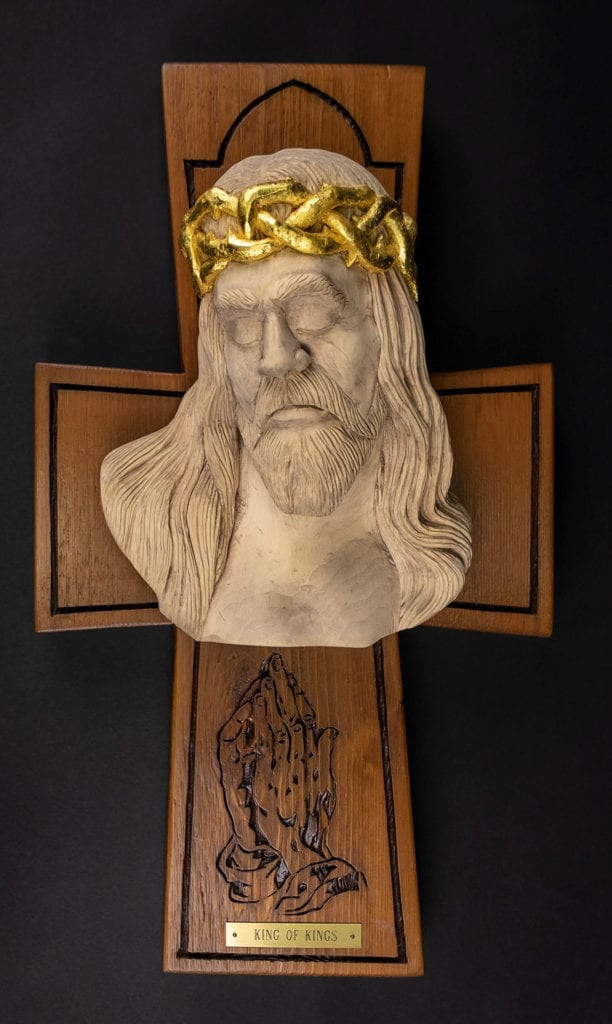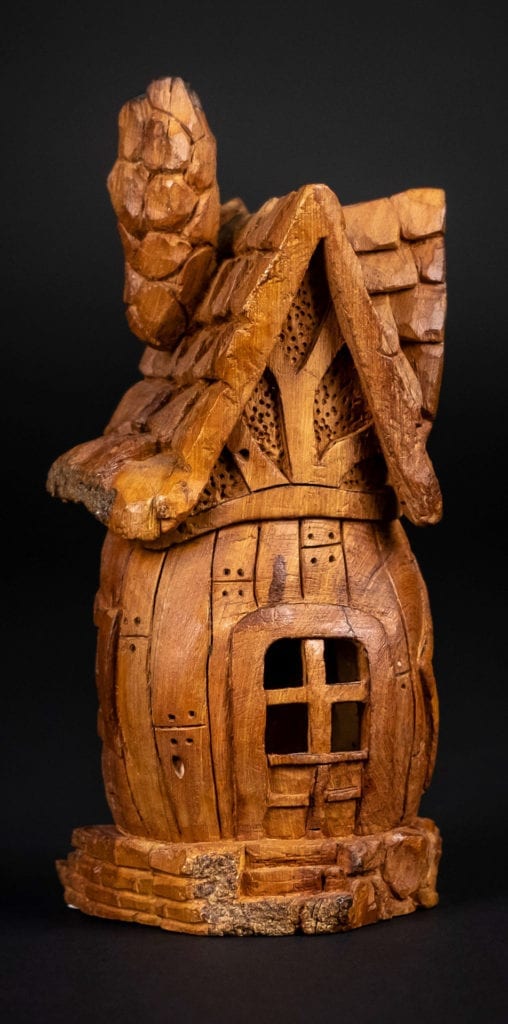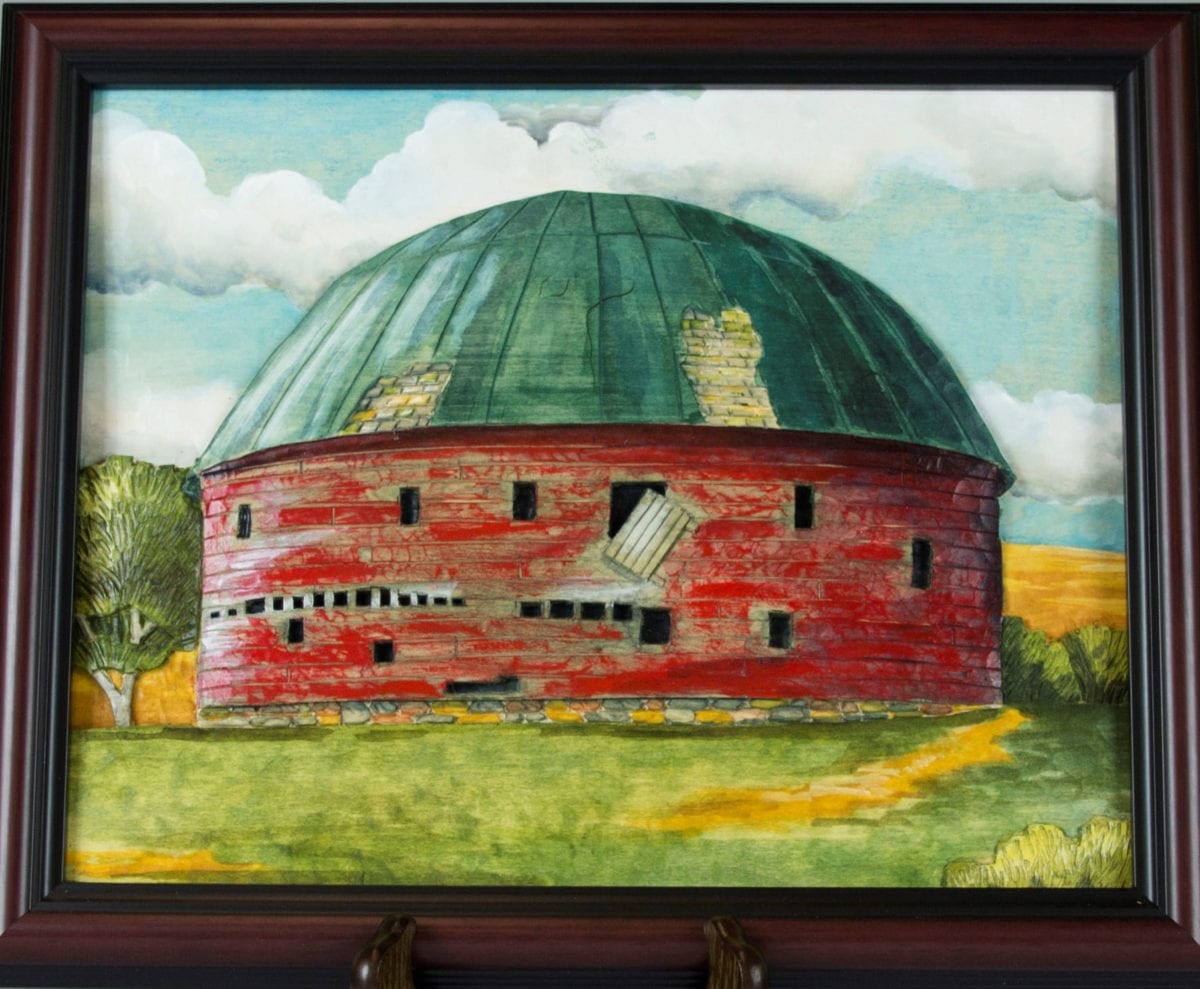Bill and Carol Payne of Broken Arrow often pack up a picnic lunch and head for the lake, where he works on a woodcarving project and she settles in with her embroidery.
It’s their pandemic therapy.
“It absolutely is stress relieving,” says Bill, a retired power plant engineer for American Airlines. “And you can work on it for a while and lay it down, and come back whenever you’re ready to.”
Retired geophysicist Richard Dalke of Oklahoma City says he’s been fascinated with woodcarving since he was a boy, when his great-grandfather gave him a pocketknife.
“There’s a satisfaction that you get from being able to make something that you like and that other people like,” says Dalke, a longtime member of the Oklahoma City Woodcarver’s Club.
For beginners, it’s good to know that woodcarving is not the same thing as whittling.
“Whittling is what you do when you just are making chips off the end of a stick,” says Dalke. “Woodcarving usually involves something other than a knife, though it’s easily done with a knife and, for a lot of people, those are their main tools.”
Woodcarving clubs offer camaraderie, training and even opportunities for community service.
Betty Zumwalt, a Tulsa retiree and member of the Eastern Oklahoma Woodcarvers Association, is a wood turner who likes to make carvings to adorn the rims of her bowls. For the past seven years, she has turned and carved a creation for the Food Bank of Eastern Oklahoma to sell at a fundraiser.
Another project close to her heart is Beads of Courage at the Children’s Hospital at Saint Francis. She and fellow members of the NOWTA turn small boxes in which the patients store their beads. The program helps the children tell their treatment stories through the different colors of beads they receive for medical procedures, treatment milestones and acts of bravery. They typically make necklaces from the beads. Local artists help the patients paint and personalize their boxes. Zumwalt makes and donates 40 to 50 Beads of Courage boxes every year.
Dalke says his club, which has about 75 members, exhibits carvings and offers free demonstrations during Global Oklahoma at Rose State College and at the Harn Homestead Museum. Members teach their skills at public libraries, to home-schooled students and at Boy Scout camps.
Payne likes to carve Christmas ornaments and give them to the Blue Star Mothers to add to Christmas packages for deployed military personnel. By August, he had already carved 150.

Carving by Bob Smith 
Carving by Cheri Bedmnark 
Carving by Chuck Wright 
Carving by Dan Nealey 
Carving by Don Mantooth 
Carving by Elaine Nealey 
Carving by Fred Self 
Carving by Gerald Hudson 
Carving by John Amicon 
By Kent Wallace
Woodcarvers like getting together to socialize and hone their skills. Dalke and Payne say small groups meet weekly in Oklahoma City and towns across the state, setting up shop in churches, at parks, in senior centers and in one another’s homes. Edmond, Midwest City, Yukon, Moore, Enid, McAlester and Duncan are among the cities where small groups meet, though many put their meetings on hold due to COVID-19.
“We sit and drink coffee and tell lies, and whatever project somebody is working on, if you need help, we will get you started,” says Dalke.
Payne, who joined the Eastern Oklahoma Woodcarvers Club the year after it was established in 1973, has judged the woodcarving competition at the Oklahoma State Fair for nearly 20 years. He travels the country to attend conventions and shows, where he enrolls in and teaches classes, exhibits his work and makes new friends.
Zumwalt says she likes to work by sitting on her back porch with a power carver.
“Most of my carving is done with a power carver, and I’ve already burned up three of them,” she says. “When you carve, you take away anything that doesn’t belong there.”
Carvers tend to have their favorite woods. Zumwalt loves maple. Dalke is fond of bass wood. Payne says he loves them all.
“There are so many pretty woods out there,” he says. “There are about 50,000 trees in the world. Butternut is a pretty wood. Sycamore is a good wood to carve, and so is walnut. Each new kind of wood is a challenge, and there are so many different things you can carve.”
Dalke’s list of creations so far includes eagles, gargoyles, lions, polar bears, ducks, pumpkins, flowers, soldiers, wizards and cowboys. Some he gives away, but most he keeps.
“My wife, Leanne, doesn’t complain about me having a lot of stuff,” he says. “She’s a quilter.”
Zumwalt, however, says she never sells her pieces.
“It takes way too much time to make them,” she says. “I would probably only get 25 or 50 cents an hour for my time if I sold them.”
Payne donates some of his work, but there’s a reason why he also sells his carvings.
“Hopefully I can sell enough to buy another block of wood,” he says with a laugh.






















